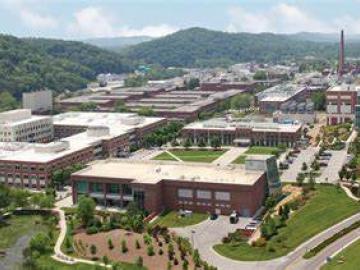Filter News
Area of Research
News Type
News Topics
- (-) 3-D Printing/Advanced Manufacturing (33)
- (-) Advanced Reactors (6)
- (-) Bioenergy (46)
- (-) Composites (5)
- (-) Frontier (19)
- (-) Mathematics (5)
- (-) Mercury (7)
- (-) Molten Salt (1)
- (-) Physics (25)
- (-) Quantum Science (24)
- Artificial Intelligence (38)
- Big Data (21)
- Biology (53)
- Biomedical (26)
- Biotechnology (9)
- Buildings (16)
- Chemical Sciences (19)
- Clean Water (14)
- Climate Change (44)
- Computer Science (76)
- Coronavirus (17)
- Critical Materials (1)
- Cybersecurity (14)
- Decarbonization (39)
- Emergency (1)
- Energy Storage (28)
- Environment (98)
- Exascale Computing (21)
- Fossil Energy (3)
- Fusion (27)
- Grid (20)
- High-Performance Computing (38)
- Hydropower (5)
- Isotopes (23)
- ITER (2)
- Machine Learning (19)
- Materials (37)
- Materials Science (37)
- Microelectronics (2)
- Microscopy (19)
- Nanotechnology (16)
- National Security (30)
- Net Zero (6)
- Neutron Science (43)
- Nuclear Energy (49)
- Partnerships (11)
- Polymers (7)
- Quantum Computing (15)
- Renewable Energy (1)
- Security (10)
- Simulation (24)
- Software (1)
- Space Exploration (11)
- Summit (29)
- Sustainable Energy (36)
- Transformational Challenge Reactor (3)
- Transportation (25)
Media Contacts

Researchers simulated a key quantum state at one of the largest scales reported, with support from the Quantum Computing User Program, or QCUP, at ORNL.

Rishi Pillai and his research team from ORNL will receive a Best Paper award from the American Society of Mechanical Engineers International Gas Turbine Institute in June at the Turbo Expo 2024 in London.

ORNL’s Erin Webb is co-leading a new Circular Bioeconomy Systems Convergent Research Initiative focused on advancing production and use of renewable carbon from Tennessee to meet societal needs.

ORNL scientists have spent the past 20 years studying quantum photonic entanglement. Their partnership with colleagues at Los Alamos National Laboratory and private industry partner Qubitekk led to development of the nation’s first industry-led commercial quantum network. This type of network could ultimately help secure the nation’s power grid and other infrastructure from cyberattacks.

In the age of easy access to generative AI software, user can take steps to stay safe. Suhas Sreehari, an applied mathematician, identifies misconceptions of generative AI that could lead to unintentionally bad outcomes for a user.

Scientists at ORNL have developed 3D-printed collimator techniques that can be used to custom design collimators that better filter out noise during different types of neutron scattering experiments
ORNL scientists have determined how to avoid costly and potentially irreparable damage to large metallic parts fabricated through additive manufacturing, also known as 3D printing, that is caused by residual stress in the material.

An experiment by researchers at the Department of Energy’s Oak Ridge National Laboratory demonstrated advanced quantum-based cybersecurity can be realized in a deployed fiber link.

A team that included researchers at ORNL used a new twist on an old method to detect materials at some of the smallest amounts yet recorded. The results could lead to enhancements in security technology and aid the development of quantum sensors.

From July 15 to 26, 2024, the Department of Energy’s Oak Ridge National Laboratory will host the second U.S. Quantum Information Science, or QIS, Summer School.




